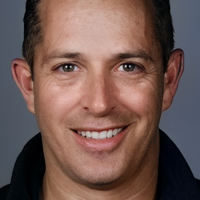A Bridge to Higher Social Security Benefits

A Bridge to Higher Social Security Benefits
CHOOSING WHEN TO START receiving Social Security bridge benefits is one of the most crucial financial decisions facing new retirees. Many people assume collecting retirement bridge benefits as soon as they are eligible at age 62 and supplementing that income with IRA withdrawals is the best way to replace income once their paychecks stop. In fact, more than two-thirds of retirees claim Social Security early even though it means accepting reduced social security bridge payment for the rest of their lives. But given increasing life expectancies and the fact that the average retirement could last 30 years, there may be a better way to maximize your retirement income.
By waiting to apply for Social Security until normal retirement age–65 and 8 months for those turning 65 this year, and gradually rising to 67 for those born in 1960 or later–workers can substantially increase their annual benefits. Workers who wait to apply until age 70 receive nearly double the annual benefits they would have received at 62, thanks to avoiding the early retirement reduction, enjoying delayed retirement credits and benefiting from all the intervening cost-of-living adjustments. Each year you postpone claiming benefits after your normal retirement age adds 7.5% or 8% (depending on when you were born) to your benefit for the rest of your life.
While this delayed-benefit strategy is usually paired with a plan to work longer and save more, there is another way to retire at 62 and put off collecting Social Security benefits until age 70. James Mahaney, vice-president of marketing for Prudential Financials’ lifetime-income division, says the company has developed an “income bridge” approach that uses a short-term immediate annuity to fill the income gap until Social Security benefits kick in. Delaying Social Security not only creates a higher initial monthly income but also produces higher annual cost-of-living adjustments year after year. If you are married, the increased benefit will pass on to your spouse after you die, providing higher income for the rest of his or her life.
BRIDGING THE GAP
Let’s assume John and Sarah Jones, who have combined earnings of $120,000, plan to retire this month, when they both turn 62. Sarah has a $3,000-a-month pension, and John has accumulated $250,000 in his company’s 401(k) that he plans to roll over to an IRA. John is entitled to $14,400 annually if he starts Social Security at age 62, and Sarah will receive $12,000 per year.
Under a traditional approach, the couple would draw down on John’s IRA each year to supplement their $62,400 of Social Security and pension income. Financial planners often recommend withdrawing no more than 4% of your nest egg the first year, adjusting it upward for inflation each year, to ensure you don’t run out of money. In the Jones’s case, that would suggest a $10,000 initial withdrawal from the IRA. But they want to withdraw more–about $14,000 at first, increasing each year. According to the assumptions in the Prudential illustration, the IRA, invested 50% each in stock and bond mutual funds earning an average return of 7% a year, runs out of money by the time they turn 81. That would leave them to rely solely on their Social Security payments plus Sarah’s pension.
Compare that with the retirement bridge approach, in which John would delay taking benefits until age 70. His projected benefit would more than double, to $31,348 a year, assuming expected cost-of-living increases, compared with his reduced benefit at 62. In the meantime, Sarah takes her Social Security at age 62 because this smaller benefit will drop off at the death of either spouse. (If John survived, he would keep his higher benefit and Sarah’s would stop. If Sarah survived, she would drop her smaller benefit and assume John’s full benefit as his widow.)
To fill the income gap, the couple uses $202,000 to purchase an immediate annuity that provides them with inflation-adjusted annual payments for eight years, starting at $28,134, for a total payout of $241,901. After the annuity payments end, John, then 70, would begin collecting his enhanced Social Security benefit for the rest of his life with annual cost-of-living adjustments and survivor benefits for Sarah. (This hypothetical example assumes John uses the bulk of his IRA to buy an annuity, but it would be wise to limit annuity purchases to no more than half of your assets.)
Under either scenario, the couple enjoys the same amount of after-tax income until John dies, in this example at age 82. At that point, Sarah would assume his higher Social Security benefit of $43,488 a year under the income-bridge approach versus only $24,846 if they had both started taking Social Security early. The result: an extra $20,000 or more of after-tax income each year for the rest of Sarah’s life.
TAXING MATTERS
Many retirees are surprised at the level of taxes they pay in retirement, particularly when mandatory IRA withdrawals kick in after age 70. Basically, if your adjusted gross income is more than $34,000 on a single return or $44,000 on a joint return, 85% of Social Security benefits are taxed. With the income 401k bridge to social security approach, taxes would be higher initially because all of the annuity payments, purchased with money from an IRA, would be taxed at your regular rates. Prudential takes that into account when calculating the size of the annuity purchase.
Once the annuity payments end, the tax burden would drop because that income would be replaced with Social Security benefits, a portion of which are tax-free. Using the Prudential illustration, the couple’s combined federal and state tax burden would be cut almost in half once the annuity payments stop.
A CHANCE TO CHANGE YOUR MIND
Usually, purchasing an immediate annuity is an irreversible decision. However, Prudential says it will let an investor back out of the plan after payments have started. You’d receive the present, discounted value of all remaining payments minus a fee that depends on how many months are left in the annuity. If you bailed out four years early, for example, the fee would be 4.5% of the lump-sum payment. If the annuity purchaser died before the term expired, payments would continue to the surviving spouse or heirs, or they could cash it in free of any surrender fee.
The Income Bridge Annuity will be available to the public in a few months. For details, see www.incomebridge.com or call 888-778-4170. Alternatively, you could buy an immediate annuity on your own. (Check current rates at www.annuityshopper.com.) But Mahaney says the value of the Prudential product is the analysis of how to optimize retirement income based on your particular situation. Prudential charges a one-time 1.5% administrative fee for the annuity.
Follow our Facebook page for more updates
—————————————————————————————————————————————————————————————————————
We hope you found this article about “A Bridge to Higher Social Security Benefits” helpful. If you have questions or need expert tax or family office advice that’s refreshingly objective (we never sell investments), please contact us or visit our Family office page or our website at www.GROCO.com. Unfortunately, we no longer give advice to other tax professionals gratis.
To receive our free newsletter, contact us here.
Subscribe our YouTube Channel for more updates.

Alan Olsen, is the Host of the American Dreams Show and the Managing Partner of GROCO.com. GROCO is a premier family office and tax advisory firm located in the San Francisco Bay area serving clients all over the world.
Alan L. Olsen, CPA, Wikipedia Bio

GROCO.com is a proud sponsor of The American Dreams Show.

The American Dreams show was the brainchild of Alan Olsen, CPA, MBA. It was originally created to fill a specific need; often inexperienced entrepreneurs lacked basic information about raising capital and how to successfully start a business.
Alan sincerely wanted to respond to the many requests from aspiring entrepreneurs asking for the information and introductions they needed. But he had to find a way to help in which his venture capital clients and friends would not mind.
The American Dreams show became the solution, first as a radio show and now with YouTube videos as well. Always respectful of interview guest’s time, he’s able to give access to individuals information and inspiration previously inaccessible to the first-time entrepreneurs who need it most.
They can listen to venture capitalists and successful business people explain first-hand, how they got to where they are, how to start a company, how to overcome challenges, how they see the future evolving, opportunities, work-life balance and so much more..
American Dreams discusses many topics from some of the world’s most successful individuals about their secrets to life’s success. Topics from guest have included:
Creating purpose in life / Building a foundation for their life / Solving problems / Finding fulfillment through philanthropy and service / Becoming self-reliant / Enhancing effective leadership / Balancing family and work…

MyPaths.com (Also sponsored by GROCO) provides free access to content and world-class entrepreneurs, influencers and thought leaders’ personal success stories. To help you find your path in life to true, sustainable success & happiness. It’s mission statement:
In an increasingly complex and difficult world, we hope to help you find your personal path in life and build a strong foundation by learning how others found success and happiness. True and sustainable success and happiness are different for each one of us but possible, often despite significant challenges.
Our mission at MyPaths.com is to provide resources and firsthand accounts of how others found their paths in life, so you can do the same.
Mastering Comprehensive Financial Planning with Bill Gombert
Introduction: In this interview, Alan Olsen, CPA and featured guest Bill Gombert discuss comprehensive financial planning and much more. Transcript: Alan Olsen Hi, this is Alan Olsen and welcome to American Dreams. My guest today is Bill Gombert. Bill, welcome to today’s show. Bill Gombert Thank you very much pleasure to be here. Alan Olsen So, Bill, you’re…
Building Amazing Conscious Communities with Brett Kaufman
Introduction: In this interview, Alan Olsen, CPA and featured guest Brett Kaufman discuss Building Conscious Communities and much more. This Transcript of Alan and Brett’s discussion of conscious community building has been generated by software and may have inaccuracies: Alan Olsen So Brett in our segments here in American Dreams, we talked about pathways of life and things…
Unveiling the Venture Vision: 12 Insights from the Frontline Capital
Insights Into Venture Capital Investing From Seminar 1 of 6 (To register for seminar 2 of 6 FREE, click here.) “In an era where financial landscapes are constantly being reshaped, it’s crucial for investors to stay ahead of the curve. The Venture Vision Webinar, a joint initiative by GROCO and Impact Venture Capital, recently hosted…
Heroes and Horses: Brave Challenge to Veteran Care Status Quo
Introduction: In this interview, Alan Olsen, CPA and featured guest Micah Fink discuss how Horses and Heroes use horses to aid veteran care and much more. Transcript: Alan Olsen Welcome to American Dreams. My guest today is Micah Fink, CEO and founder of Heroes and Horses. Micah, welcome to today’s show. Micah Fink Alan, thank…




